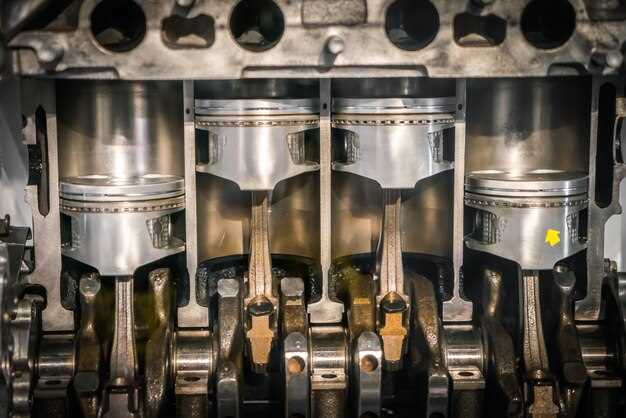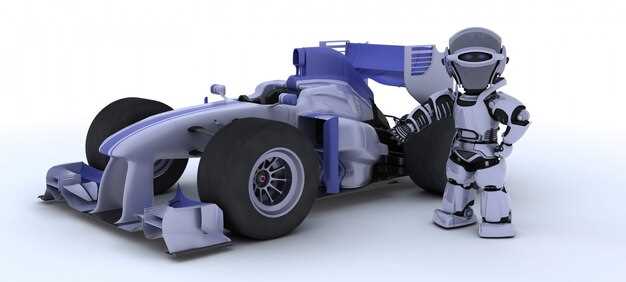
The realm of motorsport has historically been a testing ground for cutting-edge technology, with continuous innovations pushing the limits of performance. In recent years, hybrid powertrains have emerged as a significant trend, combining traditional internal combustion engines with electric systems to enhance both efficiency and power. This transformative approach is not merely about meeting environmental regulations; it’s reshaping the competitive landscape by offering teams the opportunity to optimize their performance strategies.
At the heart of this evolution lies the concept of energy recovery. Hybrid systems utilize advanced technologies to capture kinetic energy during braking and redeploy it during acceleration, providing a substantial boost in power without the need for additional fuel consumption. This ability to recover and reuse energy gives vehicles a crucial advantage in endurance and speed, making them not only faster but also more sustainable in the long run.
The integration of hybrid engines has forced teams to rethink their performance metrics and race strategies. By harnessing electric power alongside traditional engine outputs, drivers can experience increased torque and responsiveness, resulting in more dynamic racing experiences. As motorsport continues to evolve with this hybrid approach, the future promises to be an exciting blend of tradition and innovation, where the competition relies as much on technological advancement as it does on driving skill.
Understanding the Mechanics of Hybrid Engines in Racing
Hybrid engines in racing represent a cutting-edge blend of traditional internal combustion systems and advanced electric propulsion. This combination allows for improved performance and efficiency on the track. At the core of these engines is the synergy between the internal combustion engine (ICE) and electric motor, which work together to optimize power output while minimizing fuel consumption.
The internal combustion engine is typically responsible for generating the primary source of power, while the electric motor acts as a supplemental force. This dual approach enables racing cars to achieve higher speeds and quicker acceleration by utilizing the strengths of both systems. Moreover, the integration of a battery pack allows the vehicle to store energy generated during braking, which enhances the overall efficiency of the powertrain.
Energy recovery is a crucial aspect of hybrid racing engines. During braking, kinetic energy is captured and converted into electrical energy through regenerative braking systems. This recovered energy is then stored in batteries for later use, providing an additional power boost when needed. This not only improves lap times but also contributes to reduced fuel consumption, making racing more sustainable.
By implementing sophisticated management systems, racing teams can optimize the interaction between the engine and electric motor. These systems monitor various parameters such as throttle position, battery state, and vehicle dynamics to determine the ideal power distribution. This seamless coordination allows drivers to experience enhanced performance without compromising control or handling.
In conclusion, hybrid engines in racing leverage the strengths of both internal combustion and electric systems, creating a powerful and efficient powertrain. The innovative use of energy recovery further enhances performance, showcasing the potential of hybrid technology in transforming the landscape of motorsport.
Energy Recovery Systems: Maximizing Performance on the Track

Energy recovery systems play a pivotal role in hybrid powertrains, providing significant advantages for motorsport performance. These systems harness energy that would otherwise be wasted during braking or acceleration, transforming it into usable power. By capturing kinetic energy, teams can gain an edge over their competitors, enhancing both speed and efficiency on the track.
One of the most effective forms of energy recovery is achieved through regenerative braking. This system converts the momentum of the car into electrical energy, stored in batteries for later use. When drivers accelerate, this stored energy can be released to supplement the internal combustion engine, delivering a boost that improves lap times without increasing fuel consumption.
Another crucial aspect of energy recovery systems is their ability to balance performance with sustainability. By effectively managing power delivery, these systems not only enhance performance but also reduce environmental impact. Teams are increasingly focused on developing innovative recovery methods, including advanced flywheel systems and supercapacitors, which offer rapid energy exchange for immediate power input when needed.
The integration of energy recovery systems into hybrid powertrains has led to a new era of motorsport, where efficiency and performance are no longer mutually exclusive. As engineering advancements continue to evolve, the potential for optimized performance through recovery systems is vast. Teams that master these technologies will have a distinct advantage, pushing the boundaries of what is possible on the race track.
The Future of Motorsport: Trends in Hybrid Powertrains

The evolution of hybrid powertrains is reshaping the landscape of motorsport, combining traditional internal combustion engines with advanced electric systems. This integration is not just about enhancing performance; it’s also about sustainability and efficiency.
One significant trend is the development of hybrid systems that optimize power output while minimizing emissions. Manufacturers are investing in research to create hybrid engine configurations that deliver superior torque and acceleration, allowing teams to gain competitive advantages on the track. These systems often utilize regenerative braking, which recovers energy during deceleration and redirects it to recharge the vehicle’s electric components, boosting performance without compromising speed.
Another notable direction is the implementation of smart energy management systems. These systems monitor and control the distribution of energy between the engine and electric motor, ensuring optimal performance based on real-time conditions. Such technology allows for tactical decisions, enabling drivers to exploit available power at crucial moments during races.
Furthermore, the use of lightweight materials in the construction of hybrid race cars contributes to improved efficiency and speed. By reducing weight while maintaining structural integrity, teams can enhance the overall performance of their hybrid powertrains, leading to faster lap times and better handling.
As regulatory bodies continue to push for sustainability in motorsport, the future will likely see even more rigorous standards for hybrid systems. This shift will drive innovation, encouraging manufacturers to develop more efficient and powerful engine designs that align with environmental goals while still thrilling fans with high-octane performance.
In conclusion, the future of motorsport lies in embracing hybrid powertrains. As technology advances, these systems will not only redefine speed and handling but will also pave the way for a more sustainable approach to racing.












